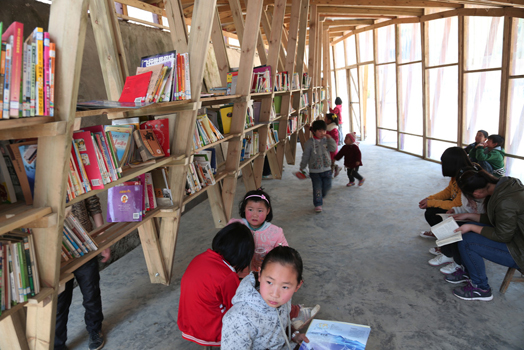Compiled by Pari Syal
Photography: Courtesy the architect
'Small Project of the Year
2014' award by World Architecture Festival goes to the new library building designed
by architects Olivier Ottevaere and John Lin - as a rehabilitation response to
China’s 2012 earthquake that doubles up as a community centre and a physical
memorial…
THE PINCH is a library and
community centre in Shuanghe Village, Yunnan Province, China. The project is
part of a government led reconstruction effort after an earthquake in September
2012.
With the majority of
village houses destroyed in the aftermath of the earthquake, leaving the
residents living in tents for up to one year, the government has sponsored new
concrete and brick houses and a large central plaza.
The University of Hong Kong
too decided to sponsor the design and implementation of a new library building.
Located in the new but empty public plaza, it proposes to serve to activate the community
and provide a physical memorial for the event.
The site of the library is
against a 4 metre high retaining wall and its design spans across this level
difference acting as a bridge between the rebuilt village and the new memorial
plaza. Emphasizing its location in a remote mountain valley, the design
responds visually to the space of the valley, offering stunning views across a
dramatic double curved roof. The structure itself rises to a peak, a monument
to the earthquake and rebuilding effort.
As a Knowledge Exchange Project, the construction involves collaboration with a local timber manufacturing factory and the process has resulted in the development of a surprisingly diverse form through simple means. A series of trusses are anchored between the upper road level and lower plaza level. The form of each truss changes to create both a gradual incline (to bring people down) and then a sharp upward pitch (to elevate the roof). The trusses are covered in an aluminium waterproofing layer and timber decking.
.jpg) |
| . |
.jpg) |
| . |
In the interior, the trusses extend downward to support a floating bookshelf. Simple traditional school benches are used as chairs and the polycarbonate doors can open to create a completely open space extending out to the plaza

.jpg)
.jpg)
.jpg)
.jpg)

.jpg)
Amazing Concept !!!!
ReplyDeleteThx4sharing..................